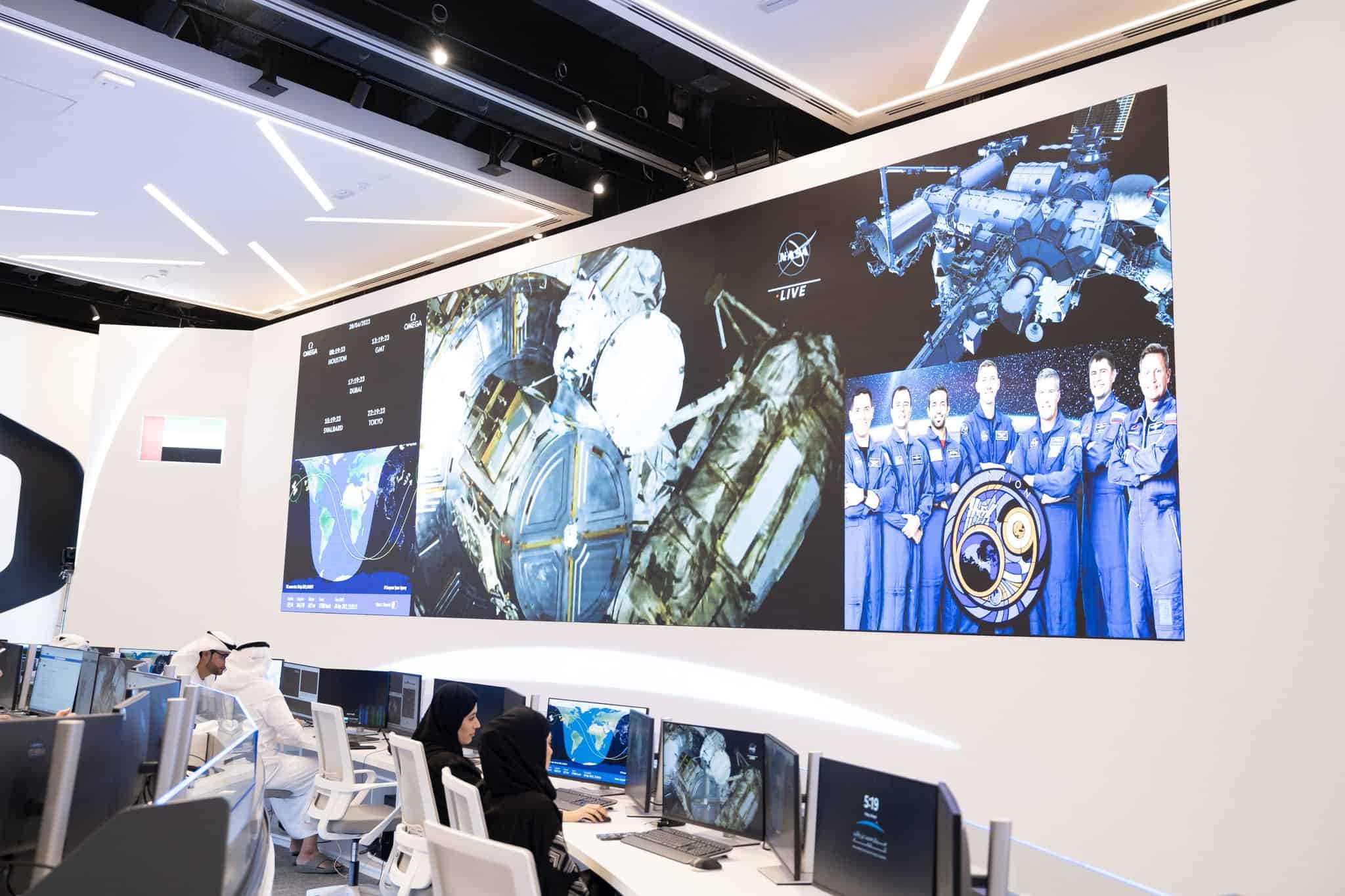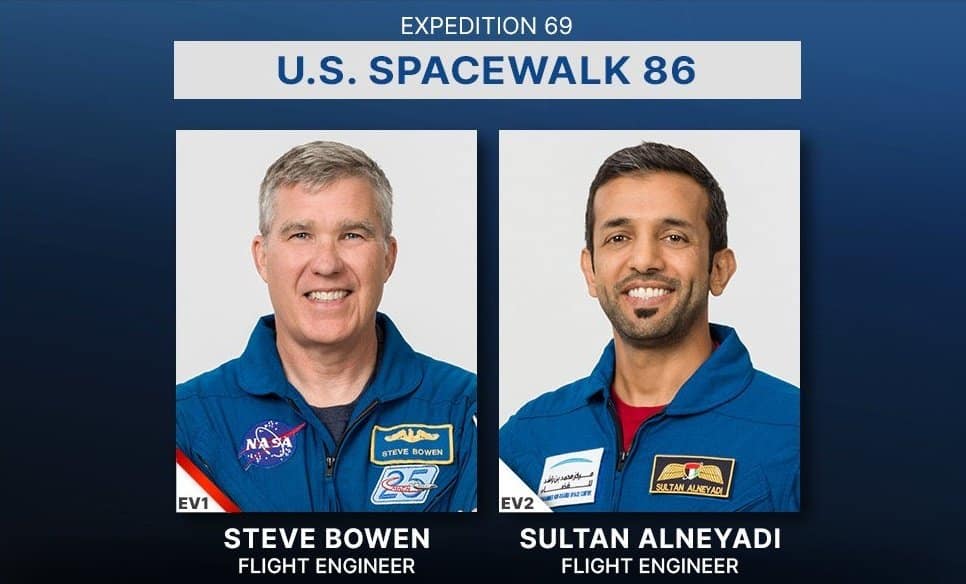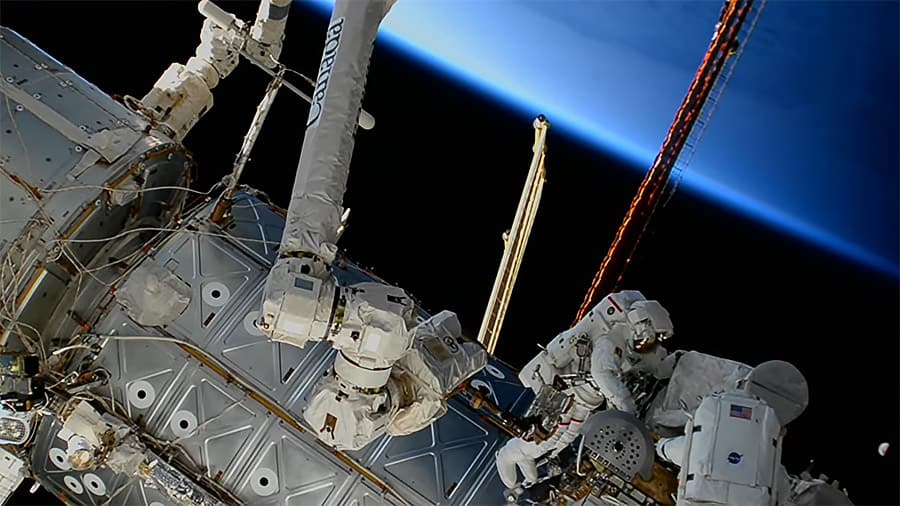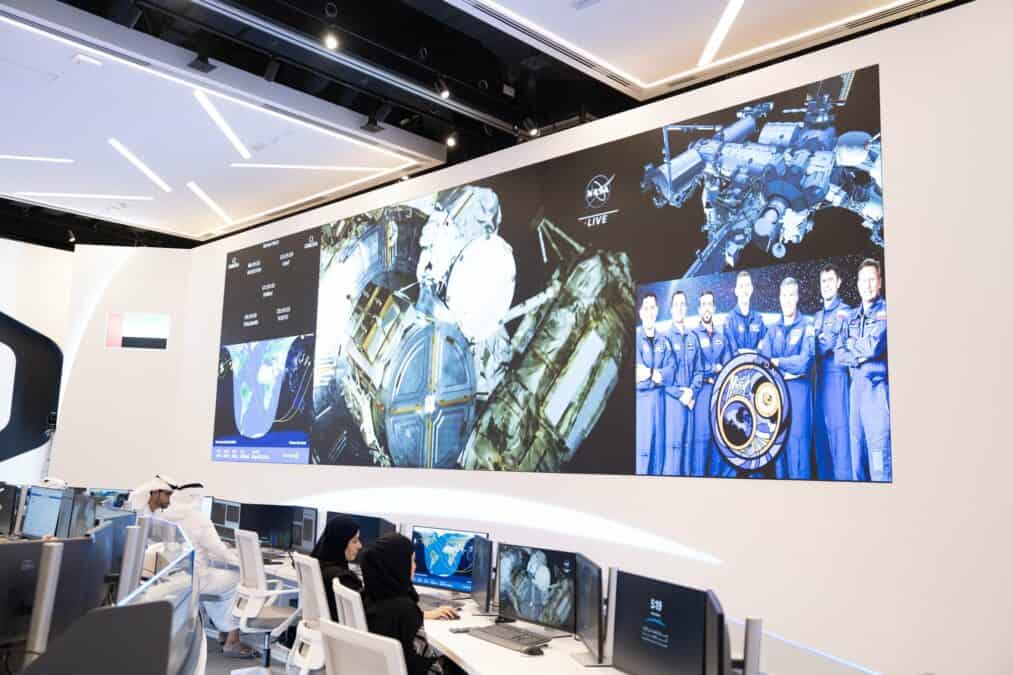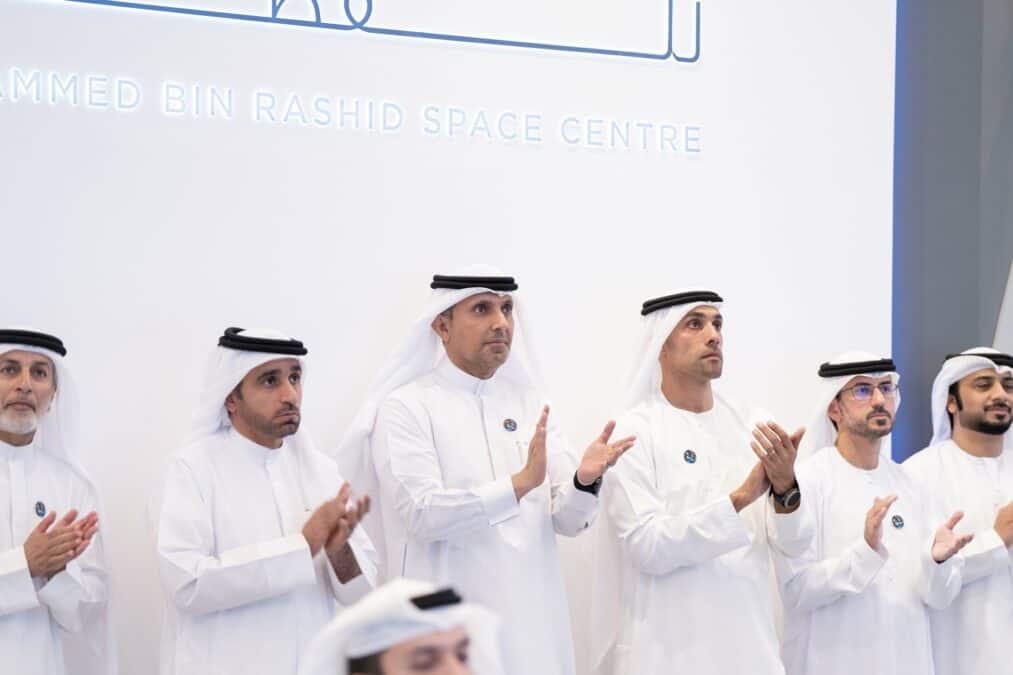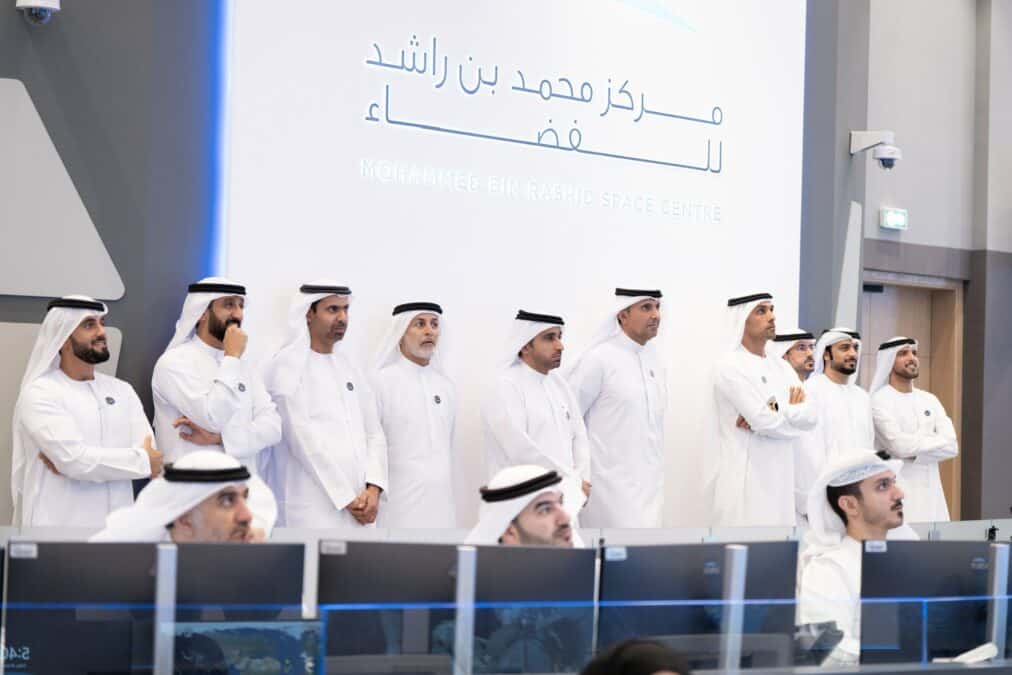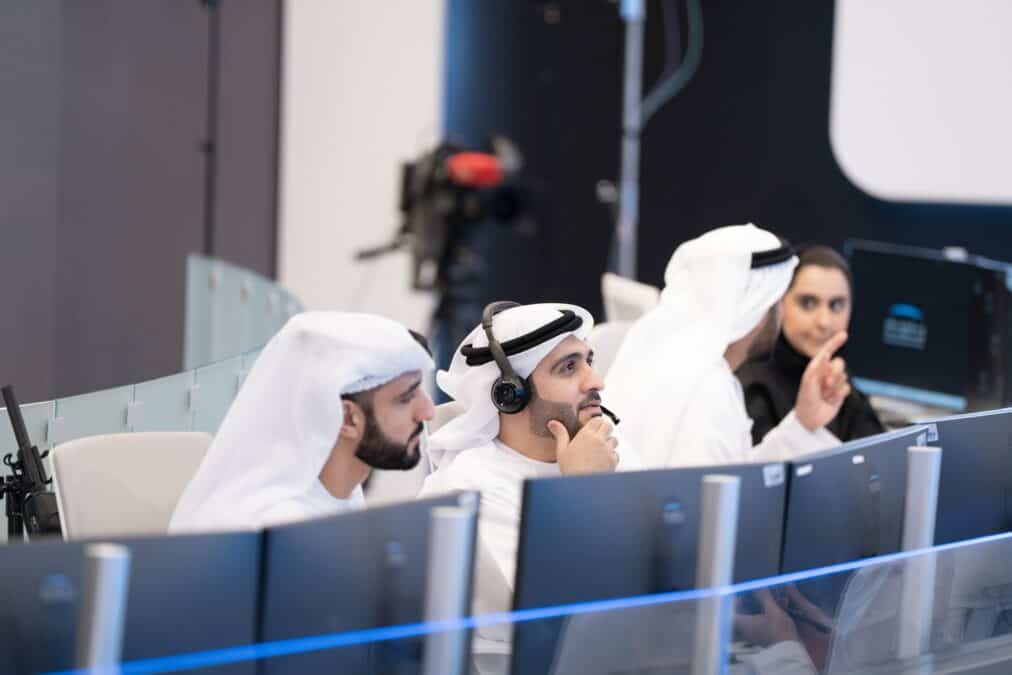DUBAI, UAE – The Mohammed Bin Rashid Space Centre (MBRSC) achieved a new milestone on Friday when astronaut Sultan AlNeyadi ventured out of the International Space Station (ISS) and completed his spacewalk.
With the conclusion of the mission task, the UAE commemorates AlNeyadi as the first Arab to undertake a spacewalk during Expedition 69, currently underway on the ISS. This accomplishment marks an important step forward for the Arab world’s participation in space exploration.
Sheikh Mohammed bin Rashid Al Maktoum, Vice President and Prime Minister of the UAE and Ruler of Dubai, said, “After three years of intensive training, today we see Sultan AlNeyadi on his first spacewalk, carrying out several tasks outside the International Space Station. AlNeyadi is the first ever Emirati, first Arab and first Muslim astronaut to perform a spacewalk.”
Sheikh Mohammed bin Rashid added, “It is a fact that many stars have Arabic names. Arabs are capable and innovative. Our focus on science and investment in youth will shape our future.”
Also Read Rashid 2: UAE plans new lunar mission
The historic first Arab spacewalk lasted 7.01 hours in the vacuum of space on the starboard side of the International Space Station’s truss structure, accomplishing two key objectives. One of the objectives of the Extravehicular Activity (EVA), undertaken by AlNeyadi along with NASA Flight Engineer Stephen Bowen, was to work on a series of preparatory tasks, which involved routing power cables, successfully concluded.
These cable works were completed as a precursor to the installation of the Space Station’s fourth roll-out solar array, known as the International Space Station Roll-Out Solar Array (iROSA), scheduled to be delivered on the upcoming SpaceX Dragon cargo mission. The next objective was to retrieve a crucial Radio Frequency Group (RFG) unit. This communications antenna, or RFG, will stay bolted on the station for now due to the difficulty of removing it.
Prior to embarking on their spacewalk, AlNeyadi and Bowen underwent a two-hour oxygen purge to eliminate nitrogen from their bodies.
Also Read UAE stays hopeful even as Rashid Rover, other payloads miss chance to explore moon
Following this, Warren Hoburg and Frank Rubio assisted the astronauts in donning their spacesuits – a major operation in itself. It took both AlNeyadi and Bowen an additional hour to put on their spacesuits and safety gear before entering the airlock to gradually reduce the pressure to a safe level for opening the exterior hatch.
Bowen was out of the hatch connecting his cable to the outside of the hull before anchoring AlNeyadi’s line outside as well. AlNeyadi then disconnected from the inside of the airlock and commenced the tasked activities.
AlNeyadi’s progress during the spacewalk was observed by Hazzaa AlMansoori, the Expedition 69 increment lead, from the NASA ground station in Houston.
Safety checks
Prior to the spacewalk, a thorough set of checks were conducted to ensure the safety of the astronauts. During their high-altitude walk outside the ISS, AlNeyadi and Bowen had to contend with two major challenges: radiation and extreme temperatures.
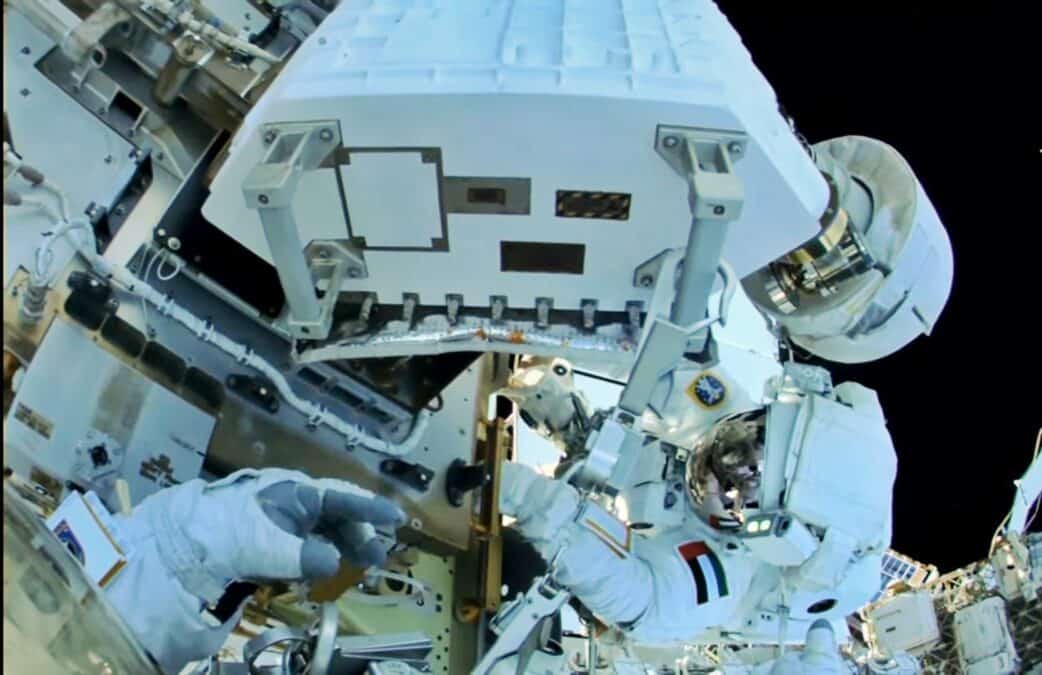
The surrounding environment in space can reach scorching temperatures of up to 120 degrees Celsius in the sunlight and drop as low as -150 degrees Celsius when the sun is out of sight. While the spacesuit is geared to handle all this, careful management of the suit during the mission was also a task at hand.
Another pressing concern, even after all the necessary precautions were taken, was the threat of space debris. It is not uncommon for space debris to come dangerously close to the orbital outpost, posing a significant risk to the crew.
Hamad Obaid AlMansoori, Chairman, MBRSC, said, “The UAE Mission 2 is a truly inspiring endeavour that embodies the spirit of Emirati excellence and determination to achieve greatness in all our pursuits. From its inception as the longest Arab space mission to the historic appointment of the first Arab increment lead on an ISS expedition, and now continuing with the groundbreaking achievement of the first Arab spacewalk by Sultan AlNeyadi, this mission has set a new standard for excellence in space exploration. Under the patronage of the wise leadership, this remarkable milestone not only represents the UAE’s unwavering commitment to consolidating its position as a dominant force in space, science, and technology but also serves as a powerful motivator for future generations to strive for knowledge and innovation with boundless enthusiasm and dedication.”
This milestone achievement will play a critical role in restoring the International Space Station to its full operational capability, cementing the UAE’s position as a leading contributor to the global space community
Salem Humaid AlMarri, Director General, MBRSC
Salem Humaid AlMarri, Director General, MBRSC, said, “Sultan AlNeyadi’s spacewalk has generated an unprecedented level of excitement and interest within the public, underscoring the immense significance of this mission. We are grateful to our visionary leadership for their unwavering support and guidance, which has enabled us to realise this ambitious goal and set the stage for even greater achievements in the future. While Sultan is conducting ground-breaking scientific experiments on the ISS, the addition of the spacewalk showcases yet another dimension of the UAE’s remarkable expertise in space exploration. This milestone achievement will play a critical role in restoring the International Space Station to its full operational capability, cementing the UAE’s position as a leading contributor to the global space community. “
Adnan AlRais, Mission Manager, UAE Astronaut Programme, MBRSC, said, “The historic achievement of the first-ever Arab spacewalk by Sultan AlNeyadi, as part of the longest Arab space mission in history, represents a remarkable milestone for the UAE. From the outset of the UAE Astronaut Programme journey, our astronauts have always set their sights on achieving the extraordinary, and with unparalleled skill and determination, they have risen to the challenge in a way that has captivated the world’s attention. As we celebrate this momentous achievement, we look eagerly to the future with great anticipation, as a new cadre of UAE professionals prepares for future missions that will enable them to further showcase our nation’s growing capabilities in the field of space exploration.”
Two months in space
AlNeyadi will soon be completing two months in space after launching from Cape Canaveral in Florida with his Crew-6 team members on 2 March. For his second month aboard the Space Station, AlNeyadi conducted multiple experiments, including several key ones, such as:
• Collecting air samples from the Destiny and Columbus laboratory modules before cleaning the Veggie space botany facility. The samples were analysed for research purposes.
• Sending approximately 1,950 kg of valuable scientific experiments and other cargo back to Earth on a Dragon cargo spacecraft, as part of the 27th contracted cargo resupply mission to the International Space Station (ISS). The spacecraft splashed down off the coast of Tampa, Florida in the US earlier this month.
As we celebrate this momentous achievement, we look eagerly to the future with great anticipation, as a new cadre of UAE professionals prepares for future missions that will enable them to further showcase our nation’s growing capabilities in the field of space exploration.
Adnan AlRais, Mission Manager, UAE Astronaut Programme, MBRSC
• Setting up the hardware for the CapiSorb Visible Systems fluid physics study. This experiment investigates the potential of using a liquid-based carbon dioxide removal system to promote more efficient space-based solutions and advanced Earth-bound applications.
• Treating samples In the Kibo laboratory module for the Engineered Heart Tissues-2 experiment using Kibo’s Life Sciences Glovebox. This research may help doctors treat, as well as prevent, space-caused heart conditions and Earth-bound cardiac disorders.
• Working on two technology experiments. In the first experiment, AlNeyadi demonstrated the use of a 3D printer to manufacture tools, components, and experiments on the orbital outpost. The second experiment entailed collecting and stowing samples in a science freezer for a study exploring the biomanufacturing of pharmaceuticals in space.
The UAE Astronaut Programme is one of the projects managed by MBRSC under the UAE’s National Space Programme and funded by the ICT Fund of the Telecommunications and Digital Government Regulatory Authority (TDRA), which aims to support research and development in the ICT sector in the UAE and promote the country’s integration on the global stage.

